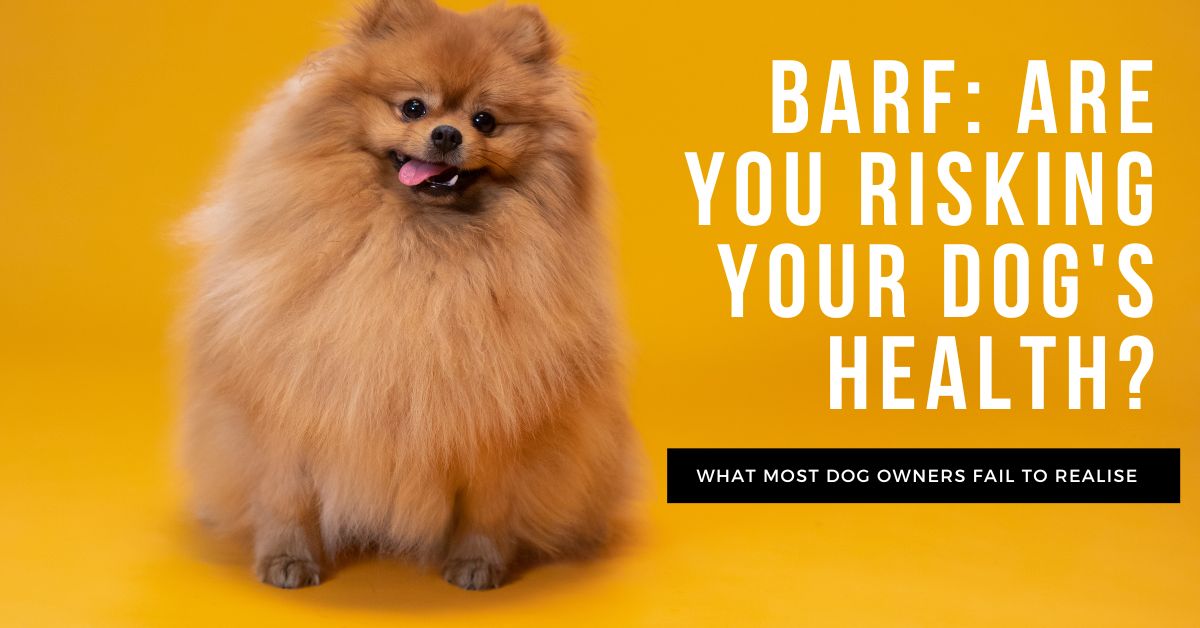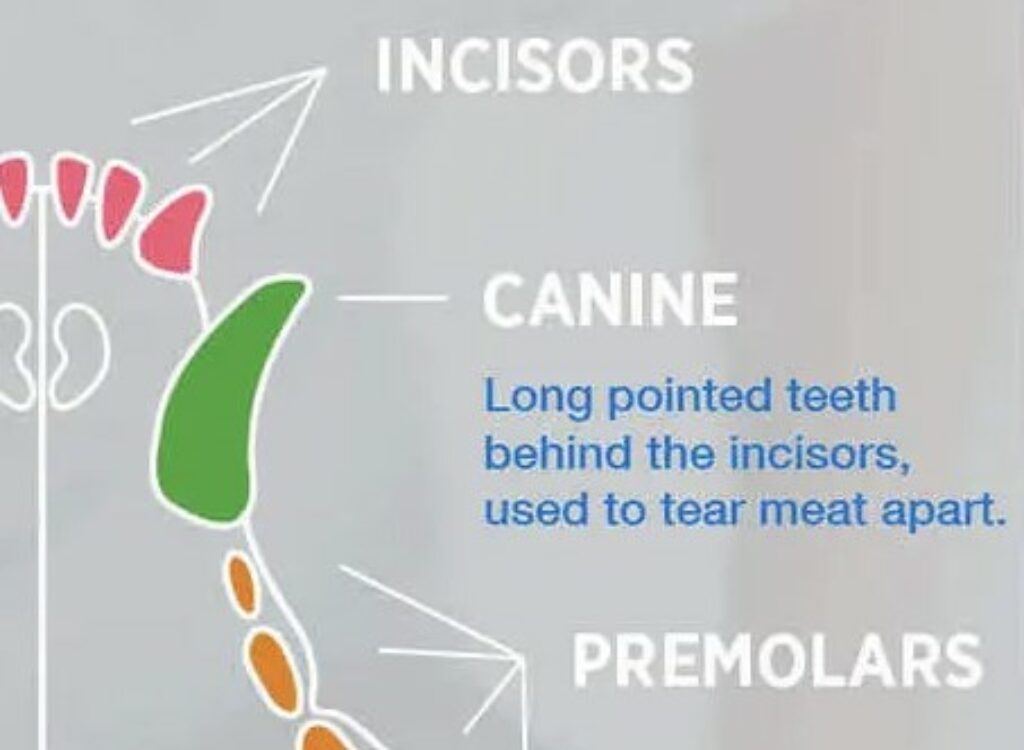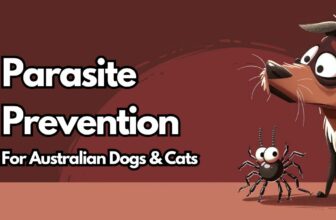
You’ll be forgiven for thinking a BARF diet is great for dogs, but most people don’t realise the one detrimental flaw – the bone content.
I suspect that came as a surprise? I’m sure you were expecting me to say bacteria, parasites, and other issues you’re already aware of with raw meats?
Nutritionally speaking, BARF (Biologically Appropriate Raw Feeding), is spot on for the needs of your dog. Science and research has taught us the correct ratios of meat, organs, and fats, and some BARF diets improve on that with prebiotics, probiotics, and superfoods which can and do benefit your dog.
However, I see the ground bone content in BARF patties the biggest risk to our dogs, and my hope with this article is to convey my reasons why. The answer may be a simple, but very important one.
Related: A Guide to BARF
- What’s the issue with bone in BARF?
- What does Dr. Ian Billinghust think? The Australian vet who invented BARF?
- It’s not just BARF then, is it?
- Products to keep your dog’s teeth clean – do they really work?
- Why should you be concerned about periodontal disease?
- A solution? BARF + Bones (although not ideal)?
- Aren’t raw meaty bones dangerous?
- Conclusion: Let your dog’s teeth do the talking.
What’s the issue with bone in BARF?
The issue with BARF diets (or patties) is they contain ground bone. This makes BARF patties a soft, wet food.
When you consider wild carnivores – wolves, tigers, lions – do you wonder why they have impeccable teeth? The answer, of course, isn’t Dentastix or Greenies, or other “dental treats” made of wheat and humectants.
It’s because they chew, rip, and tear flesh, and gnaw on bones.
It’s that simple.
This process naturally keeps their teeth clean, free of tartar and plaque.
The issue with bone in BARF, therefore, is it does not help your dog’s teeth stay clean. The meat is minced, the bone is ground, and the food is soft.
What does Dr. Ian Billinghust think? The Australian vet who invented BARF?
Dr. Ian Billinghust is an accredited Australian vet with decades of experience. B.V.Sc (Hons), B.Sc.Agr., Dip. Ed.
You can therefore assume he has credibility on this matter, and you only need to go as far as the title of his book to know what he thinks – Give Your Dog A Bone.
Ironically, despite his views, he launched the first BARF patties in Australia – Dr. B’s BARF – now owned and manufactured by The Real Petfood Co who churn out most Australian pet food brands and home brands.
It’s not just BARF then, is it?
Absolutely not. It’s a problem with wet foods in general, and you can include air-dried, freeze-dried, kibble, and prepared raw in that too.
Dry food doesn’t keep teeth clean either (not effectively anyway).
I’ve picked BARF for the subject of this article simply because of the ground bone, but many dried dog foods also contain bone, and kibble in the form of “meat meals”.
Whatever you feed your dog, the points in this article about dental health are something you should always consider.
Products to keep your dog’s teeth clean – do they really work?
Do you think the pet food industry know about this clear failing of most styles of pet food?
Whether they do or not doesn’t matter, for them it’s a wonderful opportunity to offer more products for you to buy.
Did you know most Australian pet owners believe they’re addressing dental health with treats, such as Dentastix (Mars) and Greenies (also Mars)?
If your dog’s teeth get bad enough, your vet may prescribe an expensive prescription diet, such as Hill’s, or regular teeth cleaning.
Let’s take a look at some of the products available in Australia for the dental health of your dog:
- Hill’s Prescription Diet Dental Care t/d for your dog – as recommended by your veterinarian, who you implicitly trust, with main ingredients as brewers rice and corn for your pet carnivore (or if you believe omnivore, then why aren’t their teeth like ours?).
- Hill’s Prescription Diet Dental Care t/d for your cat – as recommended by your veterinarian, who you implicitly trust, with brewers rice, corn gluten meal, and corn as 3 of the 4 top ingredients, for your factually carnivorous cat who does not need grains in their diet.
- Dentastix, under the Pedigree brand from Mars, recommended by vets, with main ingredients being cereals, humectants, and derivatives of vegetable origin. I don’t know about you, but I wouldn’t brush my own teeth with cereals. Would you?
- Greenies, also made by Mars, “vet recommended for dental care”, with main ingredients being wheat flour, wheat gluten, glycerine, gelatine, oat fibre, and water. You have to wonder whether you can brush your dog’s teeth with Weet-Bix instead. After all, it’s a cheaper option.
Ironically, the above products are “specially developed by nutritionists and veterinarians”, which suggests th simple carnivorous nature of our cats and dogs has been completely overlooked.
I don’t find any of these options effective, or even healthy, which brings me back to raw meaty bones.
But why is this so important for the health of your dog?
The reason, is the dangers of periodontal disease.
Why should you be concerned about periodontal disease?
Before you continue reading, take a look at your dog’s teeth. Any tartar? Plaque? Are they yellow or white?
Did you know most dogs who are fed raw meaty bones have impeccable teeth?
Most dogs fed a diet solely of kibble, or more so solely wet food, will have plaque and tartar build-up.
The dangers of poor dental health is widely researched in humans, and the same is the case for your dog. The build-up of plaque and tartar leads to periodontal disease, which left untreated will have the following serious consequences:
- Tooth loss, gum recession, and bone loss, which you already know can be painful. Your dog can’t verbalise their pain, which leaves them uncomfortable for many months, even years, while their teeth and gums rot. Did you know most dog owners only notice their dog has tooth pain when they stop eating hard dry food, and usually after many weeks when they eventually take their dog to the vet? With soft foods this goes unnoticed longer. The vet, as per their education, will likely recommend the Hill’s Prescription Diet mentioned above, made with rice and corn.
- Systematic infections. When most of us don’t even notice our dog’s dental pain, matters start to get increasingly worse when bacteria from the mouth enters your dog’s blood stream and causing infections in other parts of the body. This can include the heart and lungs. You may not realise this is occurring either, although you may realise your dog has all-to-regular “dog breath”.
- Increased risk of other health problems. Again, it’s worth translating the many studies in the human medical world to our dogs, and these strongly suggest an increased risk of all manner of health problems including diabetes and heart disease, as well as stroke.
If you’re lucky enough to pick up on the symptoms early, your vet may still not address the real issue. They’ll likely recommend one or more of the above products, and regular cleaning.
Even if the dental health of your dog is poor, your vet may not perform what is necessary for the health of your dog, which in this case may be tooth extraction. Some vets, such as Dr. Tom Lonsdale (inventor of the raw meaty bones diet), emphasise the necessity to extract teeth (which is not without risk under anesthetic).
For these reasons, we should use the age old mandate prevention is better than the cure, and my experience has shown the best method of prevention is feeding your down raw meaty bones.
A solution? BARF + Bones (although not ideal)?
With a BARF diet, or any of the methods of feeding your dog mentioned above (kibble, dried, et al), I see the best solution as feeding raw meaty bones as well.
This should show an improvement in your dog’s teeth within a few weeks (and many dog owners who have gone this route will testify to this).
But there’s a big but with this.
BARF diets, and other foods, are formulated for balanced nutrition, which is what “complete and balanced” means. This comes from AAFCO, the Association of American Feed Control Officials.
Any good dog food will meet these requirements, for the benefit of your dog, but on the flipside it creates this problem of poor dental health.
Calcium, in BARF foods, is “balanced”. Adding raw meaty bones to your dog’s diet can then disrupt this balance. In excess, this can be problematic.
However, if you choose the right bones, in the right moderation, then your dog can benefit from a BARF + Bones diet.
For example, your dog may chew some bones but consume others. If you’re concerned about your dog consuming too much calcium, make sure they don’t consume too much bone.
Also, keep bones to a moderation alongside a BARF diet (or other diet). This can be an easier way of feeding a dog for many, than mastering the art of full raw feeding.
If you want to go whole hog, why not read Dr. Tom Lonsdale’s raw meaty bones diet (PDF), or on of his books mentioned below?
Whatever you feed your dog, it’s worth considering adding at least some appropriate raw meaty bones to their diet.
Aren’t raw meaty bones dangerous?
Most dog owners are afraid of feeding their dog bones, which is for good reason – feeding bones is a risk.
Science and marketing (I like to use those two terms together as they’re often inter-related) teaches us we shouldn’t feed raw meats and bones to our dogs, with dry processed products being the only safe option (apparently!). Unfortunately the result of this is many pet owners, and many veterinarians, believe this is the only solution.
It’s important to note many vets have had real experience extracting bones from a dog, to save their lives. Most of the time these issues are caused by owners feeding inappropriate bones, such as cooked bones, or bones which can cause a blockage (such as knuckle bones). Some enthusiastic eaters will more readily gulp bones, which is why monitoring your dog while eating is a good idea.
I must recommend seeking your vets advice, and thoroughly researching the feeding of bones to your dog.
You will have reassurance, however, that many veterinarians do in fact recommend raw food diets and raw meaty bones to both dogs and cats.
The following books by experienced veterinarians, as mentioned above, are a very good starting point:
- Give Your Dog A Bone by Dr. Ian Billinghust (BVSc Hons, BSc Agr, Dip Ed)
- Multi-Billion Dollar Pet Food Fraud: Hiding in Plain Sight by Dr. Tom Lonsdale (BVetMed, MRCVS)
- Feeding Dogs by Dr. Conor Brady (BSc Hons, Zoology)
I highly recommend all of those books, or any one of them if you’re not a big reader. I’m confident in saying the benefit of reading any will be better health for your dog for years to come.
Conclusion: Let your dog’s teeth do the talking.
Nature is a miraculous thing, and is often always right. Those big canine teeth in your dog’s mouth are there for one reason, and that’s tearing apart prey. This is the case for all wild carnivores, and your dog is no exception.
What that means is your dog is designed-by-nature to rip and tear at meat. This is what keeps the teeth of wild carnivores clean, so why would this not be the case for your dog?
If you don’t want to take my word for it, this is what Purina (Nestle) have to say about your dog’s canine teeth:

“Long pointed teeth”, “used to tear apart meat” – so not for munching on nuggets of rice and corn?
This technique of stating the facts but convincing us otherwise (with marketing) is what Dr. Tom Lonsdale would refer to as “hiding in plain sight”.
I hope this information in this article has proved useful. As a pet owner we should always monitor the condition of our pet’s teeth, and keep in mind the health issues which may occur if we don’t.
If raw meaty bones aren’t an option for you, then regular brushing and cleaning, combined with a decent meat-based diet, will be the next best thing.
Do you feed raw meaty bones to your dog? If so, say so in the comments for the benefit of readers who are still skeptical. How are your dog’s teeth?







I’m a vet who thoroughly hates vet food and anything like it. I adore your website and recommend it to so many people.
My dog is an odd boy and has impeccable teeth, why? He gnaws on wood. (I do not recommend this for most dogs unless they are actively spitting out the wood as swallowing can lead to severe internal damage. He is also very closely monitored). He resembles a tobacco chewer with his wood, it’s rather interesting. He will turn his nose up and a perfectly good bone and go back to his piece of firewood. He will actively take a new one from the wood basket when his is getting too small for him to hold in his paws or if there isn’t much left to chew or gnaw happily. He uses both large branch pieces and actual trunk pieces.
I took him in once to do a dental after my partner and I got together (originally his dog) and there was nothing to do. I was happily bored for an hour.
Thanks Alys, it’s always great to get a positive recommendation from a vet – thank you!
Dogs love their sticks, don’t they! My dog included. I’ve found coffee wood good in the past, although I have more success with bones – which my dog loves to chew on my bedroom carpet, and only on my bedroom carpet.
my dogs and cats eat a raw bone free barf diet plus raw chicken necks and raw venison neck bones they all have white shiny teeth the vet has told me that oriental cats breeds usually have periodontal disease my two cats have perfect gums and teeth – they all have very shiny coats and bright eyes
Another great article!
“this is what Purina (Nestle) have to say about your dog’s canine teeth”..
seems strange coming from a kibble manufacturer.. lol
Thanks Karen, very much appreciated. I had Sacha Packer slating me for using a click-bait title – not sure if she actually read the article.
Really keen to see what people feed their dogs in regards to bones. The research I have conducted is full of conflicting types of bones. Marrow bones are ok vs marrow bones will break teeth.
Definitely don’t want to visit the vet, but want my dog to have the dental benefits.